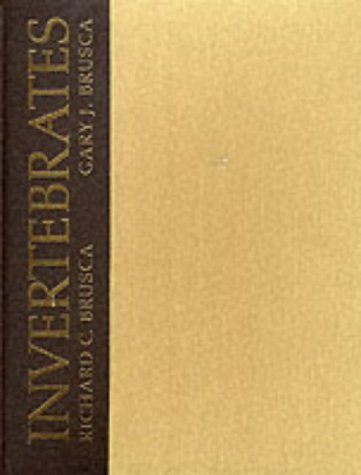
You have requested a machine translation of selected content from our databases. This functionality is provided solely for your convenience and is in no way intended to replace human translation. Neither BioOne nor the owners and publishers of the content make, and they explicitly disclaim, any express or implied representations or warranties of any kind, including, without limitation, representations and warranties as to the functionality of the translation feature or the accuracy or completeness of the translations. Translations are not retained in our system. Your use of this feature and the translations is subject to all use restrictions contained in the of the BioOne website.
Publications (books) 1973. A Handbook to the Common Intertidal Invertebrates of the Gulf of California. 427 pp., 295 figs. Arizona Press, Tucson. Out of print. Arizona Press, Tucson, AZ. Available from the publisher or Amazon.com (or as a reduced-size pdf here Brusca 1980 Gulf Handbook SMALL.pdf).
Brusca and Gary J. Sinauer Associates, Sunderland, MA, 2003.
936 pp., illus. $109.95 cloth (ISBN ). Brusca (director of conservation and research at the Arizona–Sonora Desert Museum and widely recognized invertebrate zoologist and isopod crustacean specialist) and Gary J. Brusca (professor at Humboldt State University from 1967 to 1998 and amphipod crustacean specialist) have published a substantial update to their 1990 Invertebrates text. Like its predecessor, this book is intended to support the lecture component of a one- or two-semester upper-division college course in invertebrate zoology. It is dedicated by Richard to his late brother Gary, who died in 2000.
This book clearly reflects the two brothers' extraordinary collective efforts to update their already comprehensive coverage of invertebrate animals and Protista. The striking image of a swimming medusa ( Pelagia) on the new cover was my first clue to the pleasant surprise I got when I started exploring all the beautiful and informative illustrations, including many in full color, a contrast to the strictly black and buff illustrations in the former edition. These new illustrations are bound to please both instructors and students. An excerpt from the substantially revised chapter on Protista has been made available for downloading by the publisher in PDF format ( ).
It was therefore decided to find clean image on the finished virtual machine, so as not to clog the physical computer, and the program operation is not affected, and the number of updates and man-made manipulations should be reduced to a minimum. Psa diagbox keygen. So after a short search xrip assembly was found to virtualbox, which as the author can be put on an android device.
I recommend that those familiar with the first edition download this chapter to see just how spectacular the illustrations are throughout this new edition. Another change is that the illustration sources and credits have now been moved to the rear, more directly conveying pertinent information to students yet also somewhat diminishing the appreciation of ongoing research for a student pondering a classic account of natural history. This new edition is 14 pages longer than the 1990 edition but slightly less massive because of its thinner, shiny white paper stock and slightly smaller font size.
My side-by-side comparisons of old and new editions revealed that some outdated paragraphs or sections had been appropriately dropped, while other snippets of text reflecting updates had been inserted. Many problems with the first edition have been corrected. The references at the end of each chapter are somewhat updated, preserving most of the older citations. Like the former edition, this is hardly a text an instructor can expect students to read from cover to cover. Two recent invertebrate zoology texts (one by Janet Moore, An Introduction to the Invertebrates, and one edited by D. Anderson, Invertebrate Zoology; see ) are shorter and more affordable for students. On the other hand, I have found that most students prefer having a more encyclopedic reference when questions arise in the laboratory.
The approach taken in this edition of Invertebrates is very similar to that of the 1990 edition. The Bruscas have once again emphasized functional morphology and phylogeny as organizing principles.
The introductory four chapters remain one of the best available overviews of the unifying principles of comparative zoology. These chapters are concise and general enough that they can serve as required reading assignments early in the semester, presenting the students with an excellent overview of, especially, functional morphology and development. The overview of classification, systematics, and phylogeny (chapter 2) is somewhat less successful and is dense in places. Asda e80010 dab clock radio manual download free apps for windows 7.